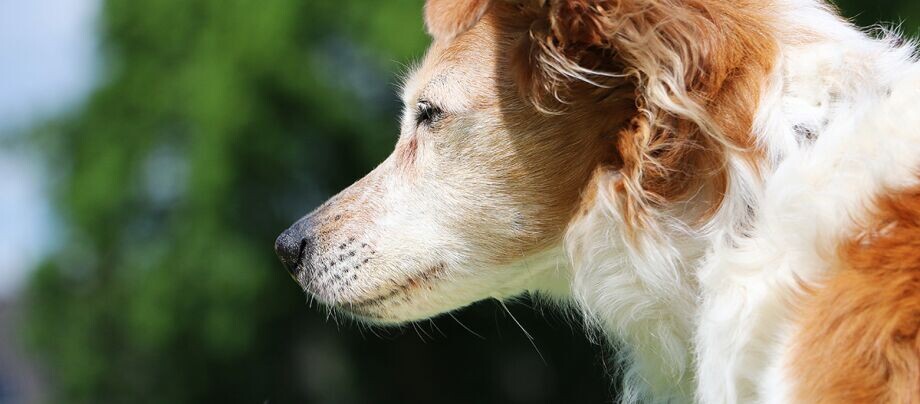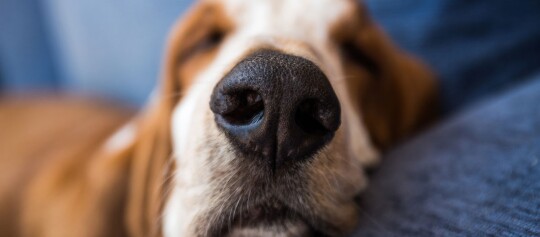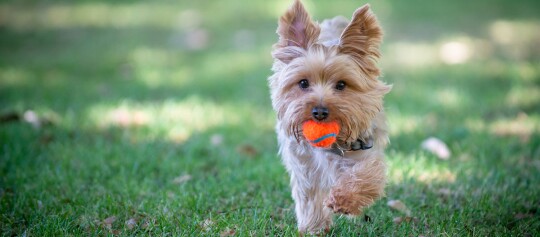Kromfohrländer – Ideal for Families and First-Time Dog Owners
07.10.2022 - Reading time: 3 minutes

The Kromfohrländer is one of the less well-known breeds. The charming, intelligent companion dog has a wonderful nature, is good with children, easy to train and only has a slight hunting instinct. The Kromfohrländer is an ideal family dog which, thanks to its medium size, low maintenance requirements and close bond with its owners is also ideally suited for first-time dog owners.
Kromfohrländer – a wholeheartedly family dog
The Kromfohrländer was the result of a breeding project in southern North Rhine-Westphalia in the first half of the last century. According to historians, the progenitor of the breed, “Original Peter” came with American soldiers from France. In German, Kromfohrländer means crooked furrow, which is where the name of the new breed from the cross of the Wire Fox Terrier and the Grand Griffon Vendéen originates. To date, the original breeds can still be discerned in the Kromfohrländer. From the start, the breeding goal was to breed a friendly, easy-to-train and uncomplicated companion dog. Today, this accomplished, robust and lovable breed of dog is fighting for survival. There are only a few breeders and many dog enthusiasts do not even know the charming Kromfohrländer.
The character of the Kromfohrländer
The Kromfohrländer is characterised by a cheerful, playful and affectionate nature. It has a very close bond with its family, which is why some dogs do not like being left alone. The earlier you get your puppy used to this, the better the sensitive Kromfohrländer will be able to handle a few hours without its owners. This intelligent companion dog has a certain hunting instinct which it has inherited from the Terrier and is seen as an alert member of the family. With strangers and other dogs, the charming dog is typically rather cautious and reticent. It does not demonstrate any aggression whatsoever but likes to be in the background in the beginning.
Training and keeping
The smart Kromfohrländer is deemed to be an easy-to-train breed which has a great “will to please”. It is important to place the focus on consistency and friendliness when training these dogs. Like most breeds of dog, the Kromfohrländer cannot handle the alternating moods of their owner well. During the dog’s training, you should not forget the legacy of the Fox Terrier – most Kromfohrländers have a noticeable but controllable hunting instinct. If you attach importance to your dog always coming back when called right from the outset and you prevent hunting by securing your dog with a lead, you will stand a good chance later on of having an adult dog that can run freely virtually anywhere. Joint activities such as search games, appropriate dog tricks and dog sports such as agility are good for the intelligence and love of exercise of this rare breed.
Caring for the Kromfohrländer
Both types of Kromfohrländer, rough-haired and smooth-haired, should be brushed twice a week. When they are properly cared for, they barely lose any hair in the home. Hair loss can increase substantially during the spring and autumn moulting periods. Ears, eyes and claws should be checked regularly and, if necessary, cleaned and cut.
Peculiarities and health
The medium-sized Kromfohrländer is characterised by robust health and usually reaches an age of up to 15 when it is fed and cared for appropriately. A few known hereditary illnesses need to be tested at the breeder’s, such as hyperkeratosis and von Willebrand Syndrome (VWS). There are rare cases of epilepsy, cystinuria and patella luxation. Responsible breeders take these diseases into account when selecting the breeding animals. Therefore contact a breeder registered with the VDH (German Kennel Club) or another recognised association.
You can find the best products for your Kromfohrländer here with us!
NewsletterKromfohrländer
Breed | Kromfohrländer |
Origin | Germany |
Classification | Companion dogs, Chapter Kromfohrländer |
Size | Mid-sized, height approximately 38 to 46 centimetres at the withers |
Weight | 9 to 16 kilograms |
Physique | originally sporty, thin and harmonious |
Eyes | mid-sized, oval and dark brown |
Ears | small, triangular folded ears that sit close to the head |
Coat and colour | two fur types – rough-haired and smooth-haired, mostly brown and white spots |
Special features | rare, threatened dog breed with waiting lists for breeders |
Nature | vigilant, devoted, easy to teach, friendly and lively |
Health | only a few diseases typical for the breed, such as epilepsy and hyperkeratosis |

